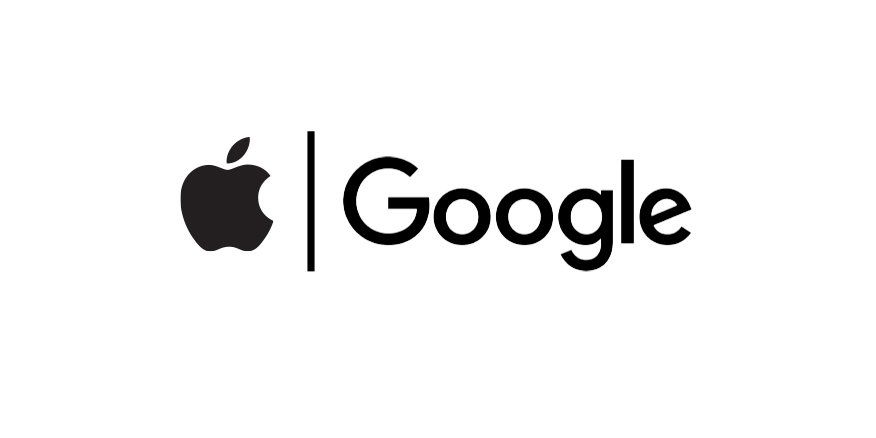Apple And Google: A Partnership Of Convenience?

Table of Contents
Areas of Collaboration: Where Apple and Google Find Common Ground
While often perceived as bitter rivals, Apple and Google surprisingly find common ground in several areas. This "Apple and Google partnership," though often unspoken, is crucial for the functioning of the broader tech ecosystem.
Shared Technology and Standards
Both companies have collaborated on essential technology standards that underpin much of our digital world. This collaboration benefits both companies and, critically, consumers.
- Wi-Fi: Both Apple and Google devices seamlessly connect to Wi-Fi networks, a standard they've both contributed to developing and refining.
- Bluetooth: The ubiquitous Bluetooth standard, enabling wireless communication between devices, is another area of implicit cooperation.
- USB-C: The gradual adoption of USB-C charging across both Apple and Android devices showcases a convergence of standards, improving user experience and reducing e-waste.
These shared standards ensure interoperability between devices, improving user experience and fostering innovation within the broader tech industry. This silent "Apple-Google collaboration" is a foundation of modern technology.
Cross-Platform Compatibility (Limited)
While technology standards are shared, cross-platform compatibility between Apple and Google ecosystems remains limited. This strategic limitation shapes the user experience and competition.
- iMessage vs. RCS: The lack of robust interoperability between iMessage (Apple) and RCS (Android's messaging standard) prevents seamless communication across platforms. This is a key point of contention, strategically benefiting Apple by keeping users within its ecosystem.
- AirDrop vs. Android equivalents: Apple's AirDrop technology provides easy file sharing within the Apple ecosystem but lacks a direct equivalent for seamless cross-platform sharing with Android devices.
The limited interoperability highlights the competitive nature of their relationship, where each company prioritizes keeping users within its own walled garden. This is a critical factor in understanding the nuances of the "Apple and Google partnership."
Joint Ventures and Strategic Partnerships
Despite the competition, there have been instances of joint ventures and strategic partnerships. These demonstrate a pragmatic approach to collaboration where mutual benefit outweighs direct competition.
- Google Maps Integration in Apple Products: Apple products have integrated Google Maps, a crucial example of practical cooperation.
- YouTube on Apple devices: The availability of YouTube on Apple devices, and vice-versa, reflects a pragmatic approach to expanding user reach.
These partnerships highlight how even fierce competitors can find common ground when it's mutually beneficial. However, such collaborations often come with limitations and strategic considerations.
Competitive Landscape: The Ongoing Battle for Market Dominance
Despite areas of collaboration, the competitive landscape between Apple and Google is fierce. Their rivalry plays out across multiple fronts.
Operating Systems (iOS vs. Android)
The battle for mobile operating system dominance is a core aspect of the Apple and Google relationship.
- Market Share: Android holds a significant global market share compared to iOS, though iOS enjoys higher average revenue per user.
- Unique Features: iOS emphasizes simplicity and user-friendliness, while Android offers greater customization and openness.
This competition drives innovation, pushing both companies to enhance their operating systems and attract developers and users.
App Stores and App Ecosystems
The competition extends to their respective app stores, creating distinct ecosystems.
- App Availability: Both platforms boast millions of apps, but the app ecosystems differ in terms of app availability and developer experiences.
- Revenue Models: Apple and Google have different approaches to revenue sharing and app pricing models, which impact developers and users.
- Developer Experiences: The development processes and requirements for each platform differ, leading to distinct developer communities and experiences.
The app store competition fuels the innovation and diversification of mobile applications, ultimately benefiting consumers.
Hardware and Services Competition
Beyond software, Apple and Google compete directly in hardware and services.
- Smartphones: The iPhone and Android phones are direct competitors, each offering distinct features and user experiences.
- Smart Speakers: Apple's HomePod and Google Home are prime examples of the competitive landscape in the smart home market.
- Cloud Storage and Streaming Services: iCloud and Google Drive, Apple Music and Google Play Music (now YouTube Music) highlight the rivalry in cloud services and digital content.
This hardware and service competition directly impacts consumer choices and technological innovation.
The Convenience Factor: Why This "Partnership" Exists (Despite Competition)
Despite their competitive relationship, a degree of collaboration exists out of mutual benefit and consumer demand.
Mutual Benefit
Collaboration on standards and limited partnerships benefit both companies.
- Establishing Industry Standards: Shared standards reduce development costs and improve interoperability, benefiting both companies and consumers.
- Accessing a Wider Market: Strategic partnerships can expand the reach of their products and services into new markets.
This mutual benefit creates an incentive for collaboration despite the competitive landscape.
Consumer Demand
Consumer preference for interoperability influences the level of collaboration.
- Seamless Cross-Platform Experience: Consumers want a seamless experience across different devices and platforms, creating pressure on both companies to increase interoperability.
This pressure from consumers contributes to the limited but existent "Apple and Google partnership."
Regulatory Pressures
Antitrust regulations play a role in shaping the relationship.
- Monopolies and Competition: Concerns about monopolies and anti-competitive practices can influence the degree to which Apple and Google collaborate or compete.
Regulatory scrutiny adds another layer of complexity to this already nuanced dynamic.
Conclusion: Apple and Google: A Complex Relationship of Cooperation and Competition
The relationship between Apple and Google is a complex interplay of cooperation and competition. While they battle for market dominance in various areas, including operating systems, app stores, and hardware, strategic collaborations on underlying technologies and in specific areas showcase a pragmatic approach to mutual benefit. The “Apple and Google partnership” is not a formal alliance, but rather a multifaceted relationship shaped by consumer demand, regulatory pressures, and the inherent advantages of collaboration in certain areas. This dynamic balance between cooperation and competition is a key factor shaping the technological landscape we inhabit today. Stay informed about future developments in the Apple-Google relationship by following company announcements and industry news to understand this ongoing evolution of the tech giants' cooperation.

Featured Posts
-
 Plan Trampa Schodo Zavershennya Viyni Reaktsiya Borisa Dzhonsona
May 11, 2025
Plan Trampa Schodo Zavershennya Viyni Reaktsiya Borisa Dzhonsona
May 11, 2025 -
 Find Kojak On Itv 4 Episode Dates And Times
May 11, 2025
Find Kojak On Itv 4 Episode Dates And Times
May 11, 2025 -
 Why Did Sylvester Stallone And Dolly Partons Musical Comedy Flop
May 11, 2025
Why Did Sylvester Stallone And Dolly Partons Musical Comedy Flop
May 11, 2025 -
 Become Baba Yaga Your John Wick Experience In Las Vegas
May 11, 2025
Become Baba Yaga Your John Wick Experience In Las Vegas
May 11, 2025 -
 Denmarks Eurovision 2025 Hope Sissals Bid
May 11, 2025
Denmarks Eurovision 2025 Hope Sissals Bid
May 11, 2025
